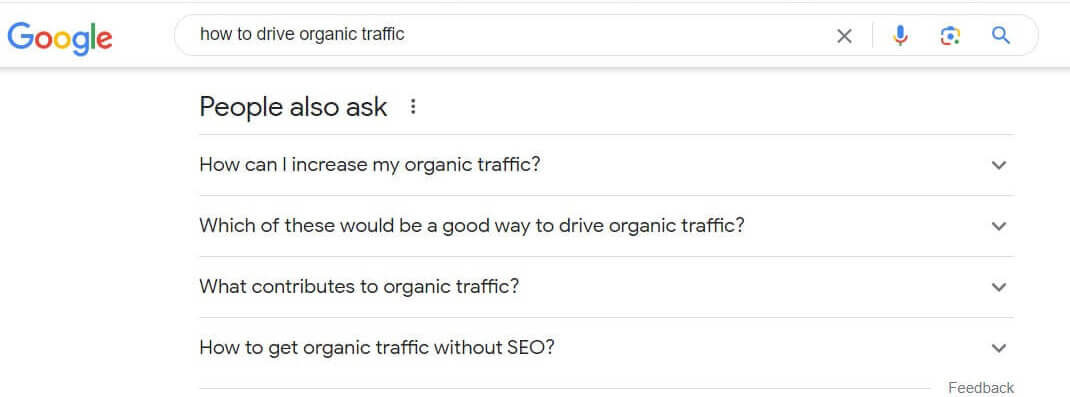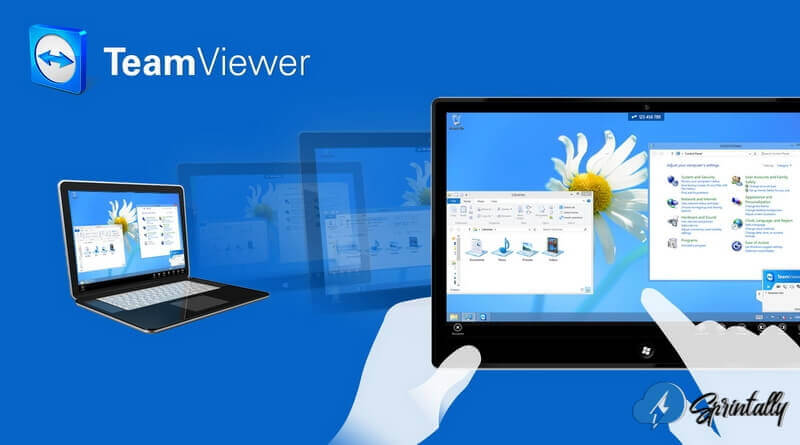Are you having trouble getting more organic traffic to your website? You might have tried making more blog posts and being more active on social media, but it hasn’t helped. Getting people to visit your website is hard, especially getting more people to come without paying for ads.
But don’t worry, there are simple things you can do to get more people to visit your website. These are really important and can make a big difference in digital marketing. We’ll talk about eight ways to get more people to visit your website without spending any money.

Here’s a simple guide to which of these would be good ways to drive organic traffic to a website:
- Make sure your content matches what people are looking for
- Improve your website loading speed
- Choose your keywords carefully
- Keep updating and reusing old content.
- Get more backlinks
- Optimize internal links of your website
- Investigate current data and metrics
- Use social media to grow your business
- Answer questions that people ask on Google.
At First, what is organic traffic?
Organic traffic means the people who visit a website without clicking on paid ads. It’s like when you search for something on Google and click on a website that shows up in the regular search results. This is different from paid traffic, which comes from clicking on ads.
Search engine optimization (SEO) is a type of digital marketing that helps increase organic traffic to a website. It’s all about making your website show up higher in search results so more people can find it.
Why do you want more organic visitors?
When people search for something online, they usually have something specific in mind. If you can give them a helpful answer or solution, you might gain a new customer, social media follower, or email subscriber.
Also, getting visitors to your website from regular search results can help build trust and lead to more sales over time compared to paid ads. Let’s be honest, we all tend to click on websites that show up at the top of Google without being an ad, right? Visitors from these search results are more likely to become customers compared to those from social media.
That’s why digital marketers focus a lot on getting organic traffic, because once you succeed, you’ll have a steady stream of visitors for the long term.
Ways to drive more organic traffic to a website
1. Make sure your content matches what people are looking for
What is search intent? Search intent or user intent is what people want when they search on search engines. If your content doesn’t give people what they want, it will give them a bad experience. Google can tell if people don’t like your page, and will rank it lower. So, when you update old content or make new content, you should focus on what people want.
Before you make or update content, think about your audience. Who are they? What are they looking for? Imagine you’re the reader and make content they would like. Make sure you know what your content is about before you write it.
One way to find out what people want is to do keyword research. Make a list of important topics based on your business. You can use tools like Ahrefs, SEMrush, and Moz to do keyword research. With these tools, you can make a content plan and make content that’s more relevant to your audience.
The point of focusing on user intent is to make your customers happy. If you make content that your audience wants, they will be more likely to come back to your site.
With the help of generative AI like ChatGPT, you can do better market research, make better outlines, and check your content for mistakes. Find out how to use ChatGPT to improve your digital marketing and get the most out of it.
2. Improve your website loading speed
Imagine you’re shopping online for clothes, but the website takes forever to load. It’s not a good feeling, right?
Did you know that 45% of people leave a website if it takes more than 3 seconds to load? Slow-loading websites also cost stores a lot of money – about $2.8 billion every year!
When a website is slow, people don’t stay on it for long. And when people leave quickly, your website shows up lower in search results. This means fewer people will see your site. So, making your website faster doesn’t just make it nicer for visitors, it also helps your website show up higher in search results!
One way to check how fast your website is, is to look at something called “Largest Contentful Paint” (LCP). It’s one of the three main things that show how fast a website is and how people use it. A good LCP score is less than 2.5 seconds. So, if you want to start making your website faster, look at these scores and keep checking them with the people who make your website once your project is running.
What’s your website’s speed right now? Put your website into our free Website Performance Audit Tool. It will show you important information about how well your website is doing compared to other websites.
3. Choose your keywords carefully
Selecting the right keywords is really important for getting people to visit your website. Instead of using the most popular keywords, it’s better to use ones that specifically relate to what you offer. Over time, search engines like Google will recognize your website as a go-to place for certain topics. This will make your content show up higher in search results, making it easier for potential customers to find you.
Keywords can be short or long. Short ones cover broad topics and are searched for a lot. Long ones are more specific and have fewer searches. Using both types together can be really effective.
Long-tail keywords, which are longer and more specific, can attract people who are really interested in what you offer. This can help you connect with new customers and make them more satisfied.
Long-tail keywords also match the way people talk, which is great for voice searches. This makes them better at understanding what people are looking for when they speak their search queries.
If you go after popular keywords that don’t really match what you do, it’s a waste of time and resources. It’s better to research and find keywords that really fit what you offer.
4. Keep updating and reusing old content
If you had to pick between two blog posts about making a website, would you read the one from May 2020 or the one from May 2024?
Believe it or not, even if you choose the one from last year, Google still likes new stuff. So, by updating old blog posts, you can get more people to visit your site, share your posts on social media, and become customers.
Sprintally updated and republished old blog posts and saw a 108% increase in people finding the posts through search engines. This way, they were able to use the existing popularity of the old posts instead of starting from the beginning.
Sure, here are some tips to improve your content:
1. Use Google Analytics and Google Search Console to find blog posts that need updating. If a post is outdated but could rank higher in search results, it’s a good opportunity to refresh it.
2. When updating content, make sure it’s accurate, up-to-date, and comprehensive. If information is no longer accurate, replace it. Update statistics, replace old images, fix broken links, and consider rewriting sentences and paragraphs to make them clearer.
3. Check how your page looks on mobile devices. If it’s not easy to use, make changes to improve the experience for mobile users. It’s important to prioritize mobile-friendly design when building your website.
5. Get more backlinks
Backlinks are links on other websites that go back to your website. They show that people like your website. This is important for Google’s ranking. Adding links to your content will make your pages more visible and show that other websites trust your site. Without backlinks, your website may not get much traffic.
Getting more backlinks to your website takes time and work. But you can start by:
1. Making lists like how-to guides, explainers, infographics, and posts with videos and pictures. These types of content get more links than regular posts.
2. Writing detailed guide posts.
3. Contacting important people in your field and telling them about your articles so they might want to link to them.
6. Optimize internal links of your website
An internal link is like a signpost that takes you from one part of a website to another part of the same website. Making these links work well can help more people find your website and can make it show up higher in search results. It doesn’t take a lot of time or money to do this.
When you use internal links, you can:
- Share the good things about your website with more pages
- Help visitors find the things they are most relevant to them
Do you have a lot of stuff on your website? If you do, you can connect things that are related in different blog posts and case studies. This can make people stay on your website longer and can make your website show up higher in search results.
Also, if your blog post has links to other places, it tells Google that the post is important. You might already know that this is true for links to other websites, but it’s also true for links within your own website. But be careful not to use too many internal links, because too many can make it look like you’re just trying to trick people.
7. Investigate current data and metrics
If you want to focus on growing organic traffic, look at the information you already have. By checking out your current data, you can quickly learn important things. The great thing is, you can save time by using numbers to make decisions instead of spending a lot of time thinking of ideas.
Using data analytics, you can figure out how people act on your website, where they come from, and what words they use to search – you get the idea. This helps you change and improve your content so more people visit your site organically. There are a few tools for analyzing data, like GA and GSC. For example, with GA, you can see how interesting your pages are and how much traffic is turning into something useful.
In the end, to get more organic traffic, you need to give people what they want based on both qualitative as well as quantitative research. With a little patience, you’ll have good advice, good information, and insights to make people spend more time on your site.
8. Use social media to grow your business
Lastly, a good digital marketing plan includes using social media. Social media doesn’t directly affect how high your website shows up in searches like SEO does, but it’s still really important for your business.
Think about what kind of business you have and pick one or two social media platforms to focus on. If you sell to other businesses, try Pinterest and Facebook. If you sell to consumers, try Facebook and Instagram. Make sure to add buttons on your website and in your emails that make it easy for people to share your content on social media.
MixedShare can help you make the most of social media marketing. Let’s get in touch!
9. Answer the questions on Google’s People Also Ask
Google’s “People Also Ask” is a helpful tool that shows you more questions related to what you’re searching for. For example, if you search for “how to get more people to visit my website,” Google will also show you other questions people have asked about driving traffic to a website. These extra questions can give you more information and help you find better answers.

This feature is important because it helps users find different answers to their questions. It’s especially handy when you’re not sure how to ask something exactly, and the first answer you get might not be the best one. With “People Also Ask,” you can see a variety of similar questions and their answers.
Being in Google’s “People Also Ask” section is great for websites because it gets them more clicks and visitors. Also, this feature helps marketers find better keywords to improve their search engine rankings.
Conclusion
If you want more organic traffic to your website, focus on what your readers want instead of just trying to please search engines. Use analytics tools to understand what your potential customers are interested in. Then, create content that speaks to their needs. This will help you attract the right audience and turn them into customers over time.






